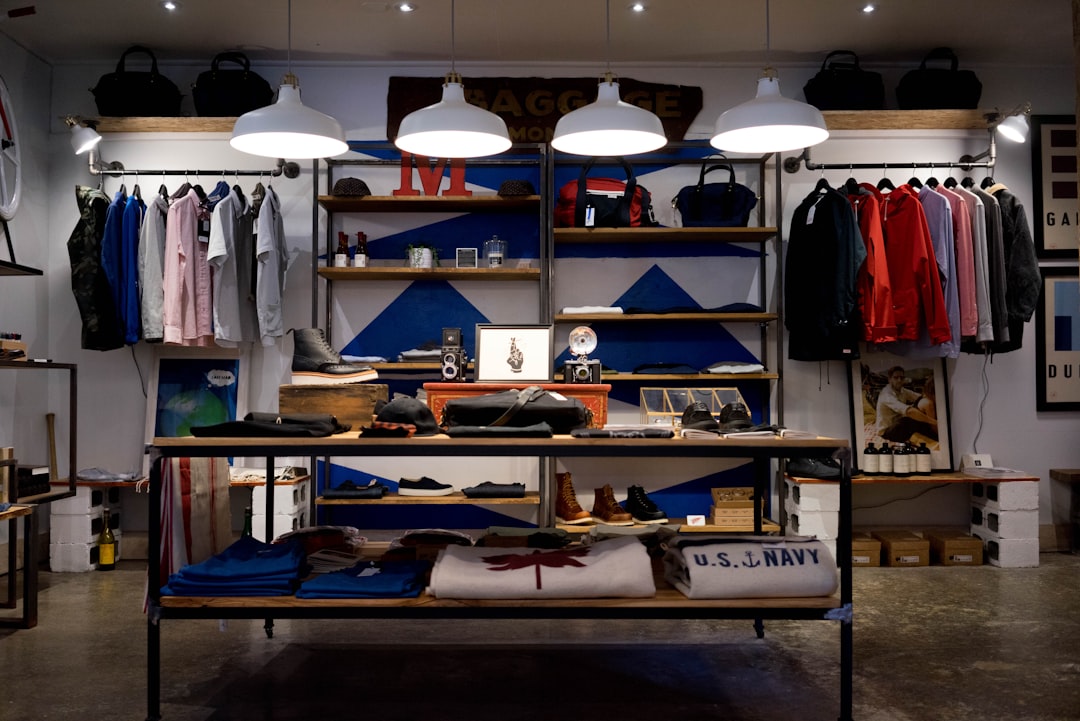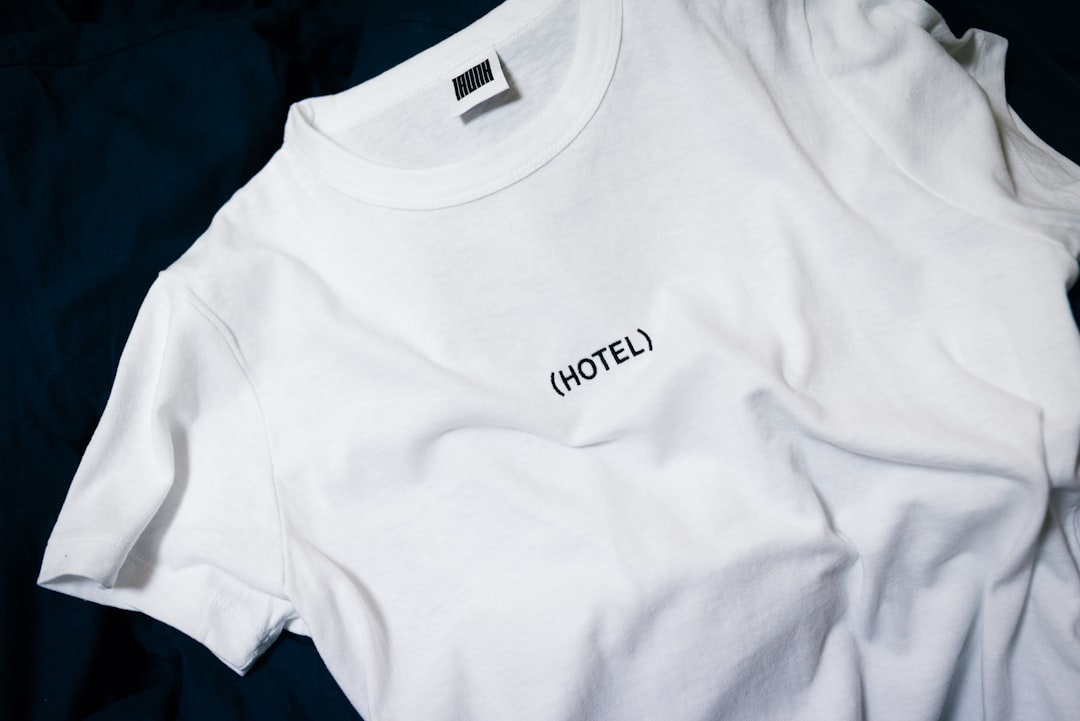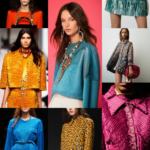Support our educational content for free when you purchase through links on our site. Learn more
Who is the World’s Largest Clothing Retailer? Top 10 Brands Revealed! 👗 [2025]
In the dynamic world of fashion, the title of the largest clothing retailer is fiercely contested, with several giants vying for the crown. But who truly holds the top spot? In this article, we’ll explore the top 10 clothing retailers dominating the global market, revealing their unique strategies, brand portfolios, and the secrets behind their success. Did you know that the global apparel market is projected to reach a staggering $3.3 trillion by 2030? This explosive growth is reshaping the industry landscape and influencing consumer behavior like never before.
As we dive into the details, you’ll discover not only the names of these retail titans but also what sets them apart in a crowded marketplace. From fast fashion to sustainable practices, we’ll cover it all. So, buckle up for a stylish journey through the world’s largest clothing retailers!
Key Takeaways
- Inditex is the reigning champion, with Zara leading the fast-fashion revolution.
- The global apparel market is expected to hit $3.3 trillion by 2030, indicating massive growth potential.
- Sustainability is becoming a crucial focus for leading retailers, with many brands committing to eco-friendly practices.
- Consumer behavior is shifting towards online shopping and personalized experiences, influencing retail strategies.
- The top 10 clothing retailers include giants like H&M, Nike, and VF Corporation, each with unique brand offerings.
Ready to refresh your wardrobe? Check out the latest collections from these top brands:
- 👉 Shop Zara: Zara Official Website
- Explore H&M: H&M Official Website
- Discover Nike: Nike Official Website
Table of Contents
- Quick Tips and Facts
- The Evolution of Clothing Retail: A Historical Perspective
- Leading Apparel Retail Brands: Who Reigns Supreme?
- Inditex: The Powerhouse Behind Zara and More
- Sales Insights: Major Apparel Manufacturers and Retailers Worldwide in Fiscal Year 2023
- VF Corporation: A Closer Look at One of the Giants
- Statistics That Matter: VF Corporation’s Performance
- Other Fascinating Statistics About VF Corporation
- The Global Impact of Fast Fashion: Trends and Insights
- Sustainability in the Clothing Retail Industry: A Growing Concern
- Consumer Behavior: How Shoppers Influence Retail Giants
- Future Trends in the Clothing Retail Market: What to Expect
- Conclusion
- Recommended Links
- FAQ
- Reference Links
Quick Tips and Facts (#quick-tips-and-facts)
- Inditex (parent company of Zara) is widely considered the world’s largest clothing retailer in terms of revenue. [1]
- The global apparel market is expected to reach $3.3 trillion by 2030, highlighting the industry’s massive scale. [2]
- Fast fashion, while controversial, has significantly impacted the industry, with brands like Zara and H&M leading the way. [3]
- Sustainability is becoming increasingly important for consumers and brands alike, driving a shift towards more ethical and eco-friendly practices. [4]
The Evolution of Clothing Retail: A Historical Perspective (#the-evolution-of-clothing-retail-a-historical-perspective)
From humble beginnings in local tailor shops to the rise of department stores and the explosion of e-commerce, clothing retail has undergone a dramatic transformation over the centuries.
Early Days and the Rise of Department Stores
In the early days, clothing was primarily a necessity, with most garments being custom-made or produced locally. The Industrial Revolution brought about mass production, leading to the emergence of ready-to-wear clothing and the first department stores in the late 19th and early 20th centuries. These grand establishments, like Harrods in London and Macy’s in New York City, offered a wide array of goods, including clothing for men, women, and children, transforming the shopping experience.
The Birth of Fast Fashion and Global Expansion
The latter half of the 20th century witnessed the rise of fast fashion, pioneered by brands like Zara. This model emphasized speed and affordability, bringing trendy designs to market quickly and at lower prices. Globalization further fueled the industry’s growth, with companies expanding their operations worldwide, sourcing materials from various countries, and establishing a global presence.
The Digital Revolution and the Rise of E-commerce
The dawn of the 21st century ushered in the digital revolution, profoundly impacting clothing retail. E-commerce platforms like Amazon and ASOS emerged, offering consumers unparalleled convenience and a vast selection of products at their fingertips. This shift online has blurred geographical boundaries, allowing brands to reach customers worldwide and transforming how we shop for clothing.
Leading Apparel Retail Brands: Who Reigns Supreme? (#leading-apparel-retail-brands-who-reigns-supreme)
The competition for dominance in the global clothing retail market is fierce, with several key players vying for the top spot. Here’s a closer look at some of the leading contenders:
-
Inditex (Spain): As mentioned earlier, Inditex, the Spanish multinational and parent company of Zara, consistently ranks among the world’s largest clothing retailers by revenue. [1] Known for its fast-fashion model, Inditex operates over 7,000 stores in over 90 countries, offering a wide range of brands like Zara, Massimo Dutti, Pull&Bear, Bershka, Stradivarius, Oysho, Zara Home, and Uterqüe. You can explore more about who dominates the clothing industry here.
-
H&M (Sweden): Hennes & Mauritz (H&M), a Swedish multinational, is another giant in the fast-fashion industry. [5] With a focus on affordability and trendy designs, H&M operates over 4,000 stores globally, catering to a wide customer base with its diverse range of clothing and accessories.
-
Fast Retailing (Japan): Headquartered in Japan, Fast Retailing is the parent company of Uniqlo, a global brand known for its casual wear and innovative fabrics. [6] The company has experienced significant growth in recent years, expanding its presence worldwide and gaining recognition for its commitment to quality and functionality.
-
The Gap Inc. (United States): An American multinational, Gap Inc. is a familiar name in the retail landscape, housing brands like Gap, Old Navy, Banana Republic, Athleta, and Intermix. [7] While facing challenges in recent years, the company remains a significant player in the industry, known for its classic American style and diverse brand portfolio.
-
Nike (United States): While primarily known for athletic apparel, footwear, and sporting goods, Nike’s massive global presence and brand recognition earn it a spot among the leading clothing retailers. [8] The company’s focus on innovation, performance, and style has resonated with consumers worldwide, solidifying its position as a leader in the sportswear market.
Inditex: The Powerhouse Behind Zara and More (#inditex-the-powerhouse-behind-zara-and-more)
Inditex’s success can be attributed to several factors, including its unique business model, strategic global expansion, and keen understanding of consumer trends.
The Inditex Business Model: A Recipe for Fast-Fashion Success
At the heart of Inditex’s success lies its vertically integrated business model, which allows for exceptional speed and flexibility. Unlike traditional retailers, Inditex controls most of its supply chain, from design and manufacturing to distribution and retail. This tight control enables the company to respond quickly to changing fashion trends, bringing new designs from concept to stores in as little as two weeks.
Global Reach and Brand Portfolio
Inditex’s strategic global expansion has also been instrumental in its growth. The company has a vast network of stores worldwide, strategically located in prime shopping destinations. Moreover, its diverse brand portfolio caters to a wide range of consumer segments, from Zara’s trendy and affordable offerings to Massimo Dutti’s more sophisticated and upscale aesthetic.
Understanding the Consumer: The Key to Staying Ahead
Inditex has a deep understanding of consumer behavior and preferences. The company constantly analyzes sales data and fashion trends, using this information to inform its design and production processes. This customer-centric approach, combined with its agile business model, has enabled Inditex to stay ahead of the curve and maintain its position as a leader in the fast-fashion industry.
Sales Insights: Major Apparel Manufacturers and Retailers Worldwide in Fiscal Year 2023 (#sales-insights-major-apparel-manufacturers-and-retailers-worldwide-in-fiscal-year-2023)
To illustrate the scale of these retail giants, let’s look at the sales figures of some of the leading apparel manufacturers and retailers worldwide in the fiscal year 2023:
| Company | Sales (in billion U.S. dollars) |
|---|---|
| Inditex | 38.9 |
| H&M | 22.2 |
| Fast Retailing | 16.6 |
| Nike | 46.7 |
| VF Corporation | 11.8 |
Source: Statista [9]
These figures highlight the immense size and global reach of these companies, showcasing their dominance in the apparel industry.
VF Corporation: A Closer Look at One of the Giants (#vf-corporation-a-closer-look-at-one-of-the-giants)
While Inditex, H&M, and Fast Retailing are often cited as the leading clothing retailers, it’s essential to acknowledge other significant players like VF Corporation.
A Diverse Portfolio of Iconic Brands
VF Corporation is an American multinational apparel and footwear company, home to a diverse portfolio of iconic brands, including Vans, The North Face, Timberland, Dickies, and Supreme. [10] This broad brand portfolio allows VF Corporation to cater to a wide range of consumer preferences and market segments, from outdoor enthusiasts and streetwear aficionados to those seeking durable workwear and classic footwear.
A Focus on Purpose-Led Brands
VF Corporation distinguishes itself through its commitment to building purpose-led brands that resonate with consumers’ values. The company focuses on sustainability, ethical sourcing, and social responsibility, aligning its brands with causes that matter to its target audience. This approach has helped VF Corporation foster strong brand loyalty and attract a new generation of conscious consumers.
Statistics That Matter: VF Corporation’s Performance (#statistics-that-matter-vf-corporations-performance)
To understand VF Corporation’s position in the market, let’s delve into some key statistics:
- Revenue: VF Corporation generated $11.8 billion in revenue in the fiscal year 2023. [9]
- Global Presence: The company operates in over 170 countries worldwide. [11]
- Workforce: VF Corporation employs approximately 35,000 people globally. [11]
These figures underscore VF Corporation’s significant scale and global reach, solidifying its position as a major player in the apparel and footwear industry.
Other Fascinating Statistics About VF Corporation (#other-fascinating-statistics-about-vf-corporation)
Beyond the basic figures, here are some intriguing statistics that shed light on VF Corporation’s operations and impact:
- Sustainability: VF Corporation has committed to sourcing 100% of its top nine materials (cotton, leather, down, wool, polyester, nylon, rubber, cardboard, and paper) from regenerative, responsibly sourced, recycled, or renewable sources by 2030. [12]
- Social Responsibility: The company’s brands have collectively donated over $110 million to charitable causes since 2017. [13]
- Innovation: VF Corporation invests heavily in research and development, constantly seeking new technologies and materials to enhance product performance and sustainability. [14]
These statistics demonstrate VF Corporation’s commitment to responsible business practices and its dedication to creating a positive impact on the environment and society.
The Global Impact of Fast Fashion: Trends and Insights (#the-global-impact-of-fast-fashion-trends-and-insights)
The rise of fast fashion has had a profound impact on the global apparel industry, influencing consumer behavior, production practices, and environmental concerns.
The Allure of Affordability and Trend-Driven Consumption
Fast fashion’s appeal lies in its ability to deliver trendy clothing at affordable prices, making fashion accessible to a wider audience. This accessibility has fueled a culture of fast consumption, with consumers buying more clothes more frequently, often discarding them after a few wears.
The Environmental and Ethical Costs of Fast Fashion
While fast fashion offers affordability and convenience, it comes at a cost. The industry’s rapid production cycles and low-cost manufacturing practices often result in environmental degradation, exploitative labor conditions, and excessive waste.
A Growing Awareness and the Rise of Conscious Consumerism
However, there’s a growing awareness of fast fashion’s negative impacts. Consumers are becoming more conscious of their purchasing decisions, seeking out brands that prioritize sustainability, ethical sourcing, and transparency. This shift towards conscious consumerism is driving brands to rethink their practices and explore more sustainable and ethical alternatives.
Sustainability in the Clothing Retail Industry: A Growing Concern (#sustainability-in-the-clothing-retail-industry-a-growing-concern)
Sustainability is no longer a niche concern but a critical factor shaping the future of the clothing retail industry.
The Environmental Footprint of Clothing Production
The fashion industry is a significant contributor to global environmental issues, from water pollution and greenhouse gas emissions to deforestation and textile waste. The production of clothing requires vast amounts of water, energy, and raw materials, often involving harmful chemicals and dyes that pollute waterways and ecosystems.
Sustainable Materials and Manufacturing Processes
To address these challenges, brands are increasingly exploring sustainable materials and manufacturing processes. Organic cotton, recycled polyester, Tencel, and other innovative fabrics offer eco-friendly alternatives to conventional materials. Similarly, brands are adopting more efficient manufacturing techniques, reducing water and energy consumption and minimizing waste.
Transparency and Traceability: Building Trust with Consumers
Transparency and traceability are crucial for building trust with consumers who are increasingly concerned about the origins of their clothing. Brands are responding by providing more information about their supply chains, sourcing practices, and environmental initiatives. This transparency allows consumers to make more informed purchasing decisions and supports brands that prioritize sustainability.
Consumer Behavior: How Shoppers Influence Retail Giants (#consumer-behavior-how-shoppers-influence-retail-giants)
Consumer behavior plays a pivotal role in shaping the strategies of clothing retail giants. These companies closely monitor shopping patterns, preferences, and emerging trends to adapt their offerings and stay ahead of the curve.
The Rise of Online Shopping and Mobile Commerce
The digital revolution has transformed how consumers shop for clothing. Online shopping offers unparalleled convenience, allowing shoppers to browse and purchase items from the comfort of their homes. Mobile commerce has further amplified this trend, with smartphones becoming the primary device for online shopping.
Social Media’s Influence on Fashion Choices
Social media platforms like Instagram, TikTok, and Pinterest have become powerful drivers of fashion trends. Influencers, fashion bloggers, and brands themselves use these platforms to showcase new styles, inspire outfits, and connect with consumers. This constant stream of visual inspiration significantly impacts consumer preferences and purchasing decisions.
The Demand for Personalization and Unique Experiences
Consumers are increasingly seeking personalized shopping experiences and unique products that reflect their individual style. Clothing retail giants are responding by offering customization options, personalized recommendations, and exclusive collaborations to cater to this desire for individuality.
Future Trends in the Clothing Retail Market: What to Expect (#future-trends-in-the-clothing-retail-market-what-to-expect)
The clothing retail market is constantly evolving, driven by technological advancements, changing consumer preferences, and a growing awareness of social and environmental issues. Here are some key trends expected to shape the industry’s future:
The Continued Growth of E-commerce and Omnichannel Retailing
E-commerce will continue to dominate the retail landscape, with online sales projected to grow significantly in the coming years. However, brick-and-mortar stores will remain relevant, evolving into experiential spaces that offer personalized services, unique product selections, and opportunities for community building. This blending of online and offline channels, known as omnichannel retailing, will be crucial for brands seeking to provide a seamless and engaging shopping experience.
The Rise of Artificial Intelligence and Data Analytics
Artificial intelligence (AI) and data analytics will play an increasingly important role in the clothing retail industry. AI-powered tools can analyze vast amounts of data to personalize recommendations, optimize pricing strategies, manage inventory more efficiently, and enhance customer service.
The Growing Importance of Sustainability and Ethical Practices
Sustainability and ethical practices will continue to be major drivers in the clothing retail market. Consumers are demanding transparency, responsible sourcing, and eco-friendly products. Brands that prioritize these values will be better positioned to attract and retain customers in the years to come.
The Emergence of New Business Models and Technologies
The clothing retail industry is ripe for disruption, with new business models and technologies emerging to challenge the status quo. Rental fashion, resale platforms, and on-demand manufacturing are just a few examples of innovations that could reshape the industry’s future.
Conclusion (#conclusion)

In the ever-evolving world of clothing retail, Inditex stands out as the undisputed leader, primarily through its flagship brand, Zara. With its innovative fast-fashion model, extensive global reach, and commitment to understanding consumer trends, Inditex has successfully navigated the complexities of the modern retail landscape.
Positives and Negatives of Inditex
Positives:
- Speed to Market: Inditex’s ability to bring new designs from concept to store in as little as two weeks is a game-changer in the fast fashion industry.
- Diverse Brand Portfolio: With multiple brands under its umbrella, Inditex caters to various consumer segments, ensuring broad market appeal.
- Global Presence: Operating over 7,000 stores in more than 90 countries, Inditex has a significant footprint that enhances brand visibility.
Negatives:
- Environmental Concerns: The fast-fashion model has faced criticism for its environmental impact, including waste and resource consumption.
- Labor Practices: Like many large retailers, Inditex has faced scrutiny over labor practices in its supply chain, prompting calls for greater transparency.
In summary, while Inditex has its challenges, its strengths far outweigh the negatives, making it a recommended choice for consumers seeking trendy, affordable clothing. As the industry continues to evolve, Inditex’s adaptability and commitment to innovation will likely keep it at the forefront of the clothing retail market.
Recommended Links (#recommended-links)
-
👉 Shop Inditex Brands:
- Zara: Shop on Amazon | Zara Official Website
- Massimo Dutti: Shop on Amazon | Massimo Dutti Official Website
- Bershka: Shop on Amazon | Bershka Official Website
-
Books on Fashion Retail:
FAQ (#faq)

Which clothing retailer has the highest annual revenue? (#which-clothing-retailer-has-the-highest-annual-revenue)
Inditex holds the title for the highest annual revenue among clothing retailers, generating approximately $38.9 billion in fiscal year 2023. This impressive figure underscores the company’s dominance in the fast-fashion sector and its ability to adapt to consumer demands.
What are the top clothing retailers in the world by market share? (#what-are-the-top-clothing-retailers-in-the-world-by-market-share)
The top clothing retailers by market share include:
- Inditex
- H&M
- Nike
- Fast Retailing (Uniqlo)
- VF Corporation
These companies collectively dominate the global apparel market, each contributing to the industry’s growth through various strategies and brand offerings.
Which company owns the most popular clothing brands globally? (#which-company-owns-the-most-popular-clothing-brands-globally)
Inditex is the owner of several popular clothing brands, including Zara, Massimo Dutti, and Bershka. Other notable companies include VF Corporation, which owns brands like The North Face and Vans, and LVMH, which owns luxury brands such as Louis Vuitton and Dior.
How has the largest clothing retailer adapted to online shopping trends? (#how-has-the-largest-clothing-retailer-adapted-to-online-shopping-trends)
Inditex has embraced online shopping by investing heavily in its e-commerce platform, enhancing user experience, and integrating online and offline channels. The company has also implemented click-and-collect services, allowing customers to shop online and pick up items in-store, thus catering to the growing demand for convenience.
What are the sustainability practices of the world’s largest clothing retailer? (#what-are-the-sustainability-practices-of-the-worlds-largest-clothing-retailer)
Inditex has committed to several sustainability initiatives, including sourcing 100% of its cotton, linen, and polyester from sustainable sources by 2025. The company is also focused on reducing waste by promoting recycling and using eco-friendly materials in its products. Additionally, Inditex aims to achieve carbon neutrality in its operations by 2040.
How does consumer behavior influence clothing retail trends? (#how-does-consumer-behavior-influence-clothing-retail-trends)
Consumer behavior significantly influences clothing retail trends, as brands adapt to preferences for online shopping, personalized experiences, and sustainable practices. The rise of social media has also shaped fashion choices, with influencers playing a crucial role in driving trends and consumer engagement.
What role does technology play in the future of clothing retail? (#what-role-does-technology-play-in-the-future-of-clothing-retail)
Technology is set to play a pivotal role in the future of clothing retail, with advancements in artificial intelligence, data analytics, and e-commerce platforms enhancing customer experiences. Brands are increasingly leveraging technology to optimize inventory management, personalize marketing efforts, and streamline supply chains.






